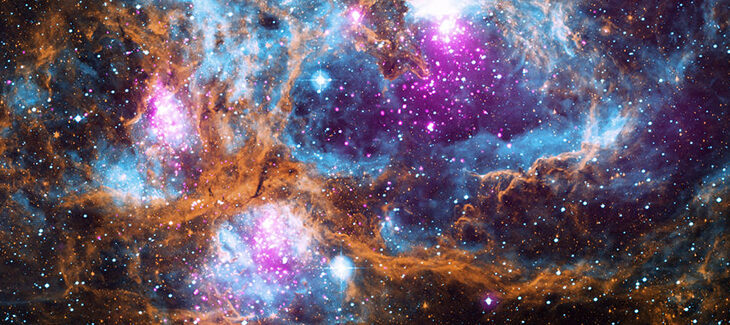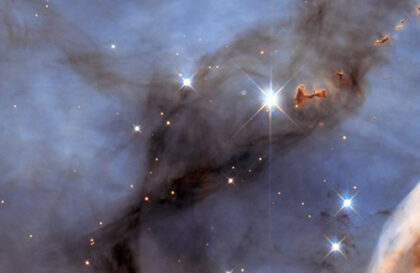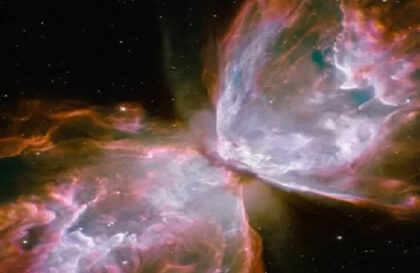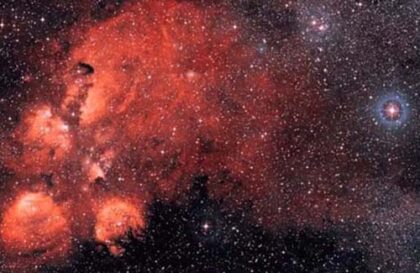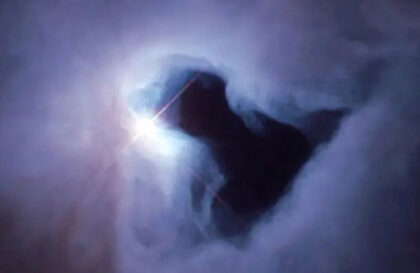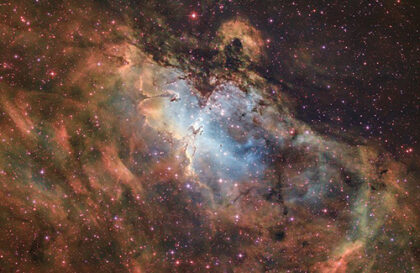About 5,500 light-years from Earth lies a “cluster of clusters” of young stars, including many hot, massive, and luminous stars.
There are no seasons in space. This cosmic view is associated with a frosty winter landscape. This is the region of NGC 6357, where radiation from young, hot stars is feeding cool gas in the surrounding cloud.
The image includes X-ray data from NASA’s Chandra Observatory and ROSAT (purple), infrared data from NASA’s Spitzer Space Telescope (orange), and optical data from the United Kingdom’s SuperCosmos Sky Survey (blue).
NGC 6357, also known as the Lobster Nebula, is a diffuse nebula in the constellation Scorpius. Inside this nebula are many protostars hidden behind dark gas disks. Young stars, in turn, are surrounded by expanding “cocoons” or gases. Scientists working with data from the Midcourse space experiment named this nebula “War and Peace Nebula” because of its appearance. Its bright western part resembles a dove in infrared images, while its eastern part resembles skulls.
NGC 6357 is a “cluster of clusters” in our galaxy. Includes three young star clusters. X-ray data from Chandra and ROSAT show hundreds of young stars in NGC 6357 and X-ray emission from hot gas. There are also bubbles and cavities formed from radiation and supernova explosions.
Dark Energy Camera captures the star-forming nebula NGC 6357. Credit: CTIO/NOIRLab/DOE/NSF/AURA;T.A. Rector (University of Alaska Anchorage/NSF’s NOIRLab), J. Miller (Gemini Observatory/NSF’s NOIRLab), M. Zamani & D. de Martin (NSF’s NOIRLab)
The nebula includes the Pismis 24 cluster with several massive stars. Among them, Pismis 24-1 stands out, initially considered the most massive star with a mass close to 300 solar masses. However, it was later revealed that Pismis 24-1 is a multiple system consisting of at least three stars, each of which is still one of the most massive with a mass of about 100 solar masses, making them essential objects for study.
A Hubble Space Telescope (HST) image of Pismis 24-1, the “core” of NGC 6357. Credit: NASA, ESA, and J. Maíz Apellániz (Instituto de Astrofísica de Andalucía, Spain)
Astronomers refer to NGC 6357 and similar objects as “HII regions” (pronounced “H-two”), which form when radiation from young hot stars ionizes hydrogen in the surrounding gas, creating clouds of ionized hydrogen referred to as “HIIs.”
Chandra is helping study NGC 6357 and similar objects because the young stars are X-ray bright, and the X-rays penetrate the gas and dust surrounding them. This allows astronomers to see details of star formation that would otherwise go undetected.
Banner image: X-ray: NASA/CXC/PSU/L. Townsley et al; Optical: UKIRT; Infrared: NASA/JPL-Caltech
Image credit:
https://www.nasa.gov
https://www.astronomy.com
https://www.nasa.gov
